Irlen Syndrome Literature: More than 300 papers, starting 1955
For more information for professionals or individuals interested in therapy, see our home page,
Irlen Institute / Percepual Development Corp
1. Adler, L., & Attwood, M. (1987). Poor Readers: what do they really see on the page? A study of a major cause of dyslexia. Los Angeles CA: Los Angeles County Office of Education.
2. Anstice, J. (2000). Eye movements: Their importance for reading and some of the factors that disrupt them. Paper presented to the 6th Irlen International Conference, Australia, 5-8 July.
3. American Music Teacher (1996, June/July) Dyslexia or Scotopic Sensitivity Syndrome? The Official Journal of Music Teachers National Association. 16-17.
4. Barbolini, G., Caffo, E., Robinson, G.L., & Wright, A. (1998). Light sensitivity and some pervasive developmental disorders: autistic disorder, Asperger’s disorder. Modena International Conference on Autism and Pervasive Developmental Disorders. Univer. Of Modena, Italy, 26-27 March.
5. Barbolini, G., Migaldi, M., Wright, A., & Irlen, H. (1996). A biological and medical approach to remedial chromotherapy. Irlen Institute, Fourth International Directors/Screeners Conference, June 27-30, New Orleans, LA.
6. Barbolini, G., Wright, A., Migaldi. M., & Irlen, H. (1996). A biological approach to remedial chromotherapy. Published in the form of a booklet. Available from: Irlen Centre East, 4 Park Farm Business Centre, Fornham St. Genevieve Bury St. Edmunds Suffolk IP28 6TS, UK.
7. Black, H. (1999). Emily’s violet-colored glasses. Woman’s World, Oct. 19, 1999, 43.
8. Blakeslee, Sandra. (1991, September 15). Study Ties Dyslexia to Brain Flaw Affecting Vision and Other Senses. The New York Times.
9. Blaskey, P., Sheiman, M., Parisi, M., Ciner, E.B., Gallaway, M., & Selznick, R. (1990). The Effectiveness of Irlen Filters for improved reading performance: A pilot study. Journal of Learning Disabilities, 23, 604-612.
10. Borsting, E., Ridder, W.H., Dudeck, K., Kelley, C., Matsuir, L., & Motoyama, J. (1996). The presence of a magnocellular defect depends on the type of dyslexia. Vision Research, 36, 1047-1053.
11. Bouldoukian, J.,, Wilkins, A.J., & Evans, Bruce J.W. (2002). Randomised controlled trial of the effect of coloured overlays on the rate of reading of people with specific learning difficulties. Ophthalmological and Physiological Optics, 22, 55-60.
12. Bouma, H., & Legein, Ch.P. (1977). Foveal and parfoveal recognition of letters and words by dyslexics and by average readers. Neuropsycholgica, 15, 69-80.
13. Bouma, H., & Legein, Ch.P. (1980). Dyslexia: A specific recoding deficit? An analysis of response latencies for letters and words in dyslexics and average readers. Neuropsychologica, 18, 285-298.
14. Brannan, J.R., & Williams, M.C. (1988). Developmental versus sensory deficit effects on perceptual processing in the reading disabled. Perception and Psychophysics, 44, 437-444.
15. Breitmeyer, B. (1980). Unmasking visual masking: a look at the “why” behind the veil of the “how”. Psychology Review, 87, 52-69.
16. Breitmeyer, B.G. (1989). A visually based deficit in specific reading disability. The Irish Journal of Psychology, 10, 534-541.
17. Breitmeyer, B.G. (1993). Sustained (P) and transient (M) channels in vision: a review and implications for reading. In D.M. Willows, R.S. Kruk, & E. Corcos (Eds.), Visual processes in reading and reading disabilities. Hillsdale, NJ: Erlbaum. 95-110.
18. Breitmeyer, B.F., & Breier, J.I. (1994). Effects of background color on reaction time to stimuli varying in size and contrast: inferences about human M channels. Vision Research, 34, 1039-1045.
19. Breitmeyer, B.F., & Ogmen, H. (2000). Recent models and findings in visual backward masking: a comparison, review, and update. Perception & Psychophysics, 62(8)
20. Breitmeyer, B.F., & Williams, M.C. (1990). Effects of isoluminant-background color on metacontrast and stroboscopic motion: Interactions between sustained (P) and transient (M) channels. Vision Research, 30(7) 1069-7052
21. Bruck, M. (1990). Word-recognition skills of adults with childhood diagnoses of dyslexia. Developmental Psychology, 26. 430-454.
22. Bulmer, J. (1994). Sensory overload and general well being: Can adults be helped by using Irlen lenses? Unpublished honors thesis, Chester College of Higher Education, Chester, UK.
23. Burgess, J. (1990). Long term evaluation of the effect of Irlen tinted lenses on academic and related skills. Unpublished M.Ed. Thesis. University of Canberra, Belconnen A.C.T.
24. Canino, F.J. (1981). Learned helplessness theory: Implications for research in learning disabilities. The Journal of Special Education, 15, 471-484.
25. Carlile, C. (1997). Scotopic sensitivity syndrome sheds new light on reading disability. Texas Reading Report, 19(4), 1-13.
26. Carmean, S., & Irlen, H.L. The relationship of Irlen reading filter hues and contrast sensitivity. Unpublished manuscript.
27. Chan, L.K.S., & Robinson, G.L.W. (1989). The effects of comprehension monitoring instruction for reading disabled students with and without tinted lenses. Australian Journal of Special Education, 13, 4-13
28. Chan, L.K.S., & Robinson, G.L.W. (1990). The effects of poor readers responsiveness to metacognition instruction in comprehension. Department of Education, University of Newcastle, Australia.
29. Chase, C.H. (1996). A visual deficit model of developmental dyslexia. In C.H. Chase, G.D. Rose, & G.F. Sherman (eds.), Developmental dyslexia: neural, cognitive, and genetic mechanisms (pp. 127-156). Timonium, MD: York Press.
30. Chase, C.H., & Jenner, A. (1993). Magnocellular processing deficits affect temporal processing of dyslexics. Annals of the New York Academy of Sciences, 682, 326-330.
31. Chase, C., Ashourzadeh, A., Kelly, C., Monfette, S., & Kinsey, K. (2003). Can the magnocullular pathway read? Evidence from studies of color. Vision Research, 43, 1211-1222.
32. Chelva, E., Collins, D.W.K., Levy, R.L., & McLaren, T.L. (1987). Preliminary electrophysical testing of subjects with prescribed Irlen tinted lenses. Dept. Biophysics, Sir Charles Gairdner Hospital. Paper presented at the Dyslexia Research Foundation Seminar, Perth, W.A.
33. Cheng, A., Eysel, U., & Vidyasagar, T. (2004). The role of the magnocellular pathway in serial deployment of visual attention. European Journal of Neuroscience, 20(8), 2188-2192.
34. Chronicle, E.P., & Wilkins, A.J. (1991) Colour and visual discomfort in migraineurs. The Lancet, 338, 890.
35. Clay, M.M., & Imlach, R.H. (1971). Juncture, pitch and stress as reading behaviour variables. Journal of Verbal Learning and Verbal Behaviour, 10, 133-139.
36. Colson, D. (2000). Thanks to Woman’s World, my son can finally read. Woman’s World, March 14, 3.
37. Conlon, E. (2000). Visual Perceptual Problems in Reading: Their relationship to reading disability and neural processing. Paper presented to the 6th Irlen International Conference, Australia. 5-8 July.
38. Cotton, M.M., & Evans, K.M. (1990). An evaluation of Irlen Lenses as a treatment for specific reading disorders. Australian Journal of Psychology, 42, 1-12.
39. Cotton, M.M., & Evans, K.M. (1994). Parents and children’s expectations about Irlen (tinted) lenses. Perceptual and Motor Skills, 78, 1387-1390.
40. Coyle, Barbara (1955). Use of filters to treat visual-perception problem creates adherents and skeptics. Canadian Medical Association Journal, 152(5) 749-750.
41. Creedon, M.P., & Reese, M. Attention and perceptual skills of students with autism using Irlen coloured filters. Unpublished manuscript. Hospital & Medical Center, Chicago.
42. Croyle, L., (1998). Rate of reading, visual processing, colour and contrast. Australian Journal of Learning Disabilities, 3, 13-21.
43. Croyle, M., & Solman R. (1996). Vision, reading and colour. Presentation to 20th Annual conference of Australian Association of Special Education.
44. Croyle, L., Elliott, R., & Dain, S. (1997). Reading, visual processing, colour and contrast. (Unpublished manuscript, University of New South Wales, Australia)
45. Davis, M., & Dodds, S. (1986). New Hope for Dyslexics. New Texas, February/March 5.
46. Demb, J.M., Boynton, G.M., Best, M., & Heeger, D.J. (1998). Psychophysical evidence for magnocellular pathway deficit in dyslexia. Vision Research, 28, 1555-1559.
47. Demb, J.M., Boynton, G.M., & Heeger, D.J. (1998). Functional magnetic resonance imaging of early visual pathways in dyslexia. Journal of Neuroscience, 18, 6939-6951.
48. Di Lollo, V., Hanson, D., & McIntyre, J.S. (1983). Initial stages of visual information processing in dyslexia. Journal of Experimental Psychology: Human Perception and Performance, 9, 923-925.
49. Eames, T.H. (1957). The relationship of the central visual field to the speed of visual perception. American Journal of Opthalmology, 43, 279-280.
50. Eden, G.F., VanMeter, J.W., Rumsey, J.M., Maisog, J.M., Woods, R.P., & Zeffiro, T.A. (1996). Abnormal processing of visual motion in dyslexia revealed by functional brain imaging. Nature, 382, 66-69.
51. Edwards, V.T., Hogben, J.H., Clark, C.D., & Pratt, C. (1996). Effects of a red background on magnocullular functioning in average and specifically disabled readers. Vision Research, 36(7) 1037-1045.
52. Evans, B. (1994). The relationship between optometric problems, visual discomfort and reading difficulties. Optician, 5436(207), 18-22.
53. Evans, B.J., Cook, A., Richards, I.L., & Drasdo, N. (1994). Effect of pattern glare and colour overlays on a simulated reading task in dyslexics and normal readers. Optometry and Vision Science, 71, 619-628.
54. Evans, Bruce J.W., & Joseph, Florence (2002). The effect of coloured filters on the rate of reading in an adults student population. Opthalmological and Physiological Optics, 22, 535-545.
55. Evans, B.J.W., Patel, R., Wilkins, A.J., Lightstone, A., Eperjesi, F., Speedwell, L., & Duffy, J. (1999). A review of the management of 323 consecutive patients seen in a specific learning disabilities clinic. Ophthalmological and Physiological Optics, 19(6), 454-466.
56. Fisher, D.F., & Shebliske, W.L. (1985). There is more that meets the eye than the eyemind assumption. In R. Corner, G.W. McConkie, & C. Menz. (Eds.). Eye Movements and Human Information processing. (pp149-157) B.V. (North Holland): Elsevier Science Publishers.
57. Fletcher, J., & Martinez, G. (1994). An eye movement analysis of the effects of Scotopic sensitivity correction on parsing and comprehension. Journal of Learning Disabilities, 27, 67-70.
58. Floyd, R.A., Dain, S.J., Elliott, R.T. (2004). Is the perception of brightness different in poor readers? School of Optometry and Vision Science, University of new South Walkes, NSW 2052, Sydney, Australia, Vision Research, Jan: 44(2), 221-7.
59. Foorman, B.R., & Liberman, B.R. (1989). Visual and phonological processing of words: a comparison of good and poor readers. Journal of Learning Disabilities, 22, 349-355.
60. Fricker, S. (1989). Do Irlen coloured glasses improve stereopsis and reading ability in children who have reading difficulties caused by visual perceptual distortion when they look at black print on white paper, and does their colour vision differ from the normal population? Unpublished Diploma of Community Child Health Thesis, Flinders University, Adelaide, Australia.
61. Geaney, E., McGeady, M., McMahon, T., Mahon, D., & Mullaney, P. (1991). Eyes, filters and reading. A pilot study. Report compiled from a pilot project conducted at Royal Victoria Eye Hospital, Adelaide Road, Dublin 2 and at the Irlen Centre, Palmerstown, Dublin 20.
62. Geiger, G., & Lettvim, J. (1987). Peripheral vision in persons with dyslexia. The New England Journal of Medicine, 20, 1238-1243.
63. Gole, G.A., Dibden, S.N., Pearson, C.R., Pidgeon, K.J., Hannell, G., Fitzgerald, B.A., Kortman, J.Y., & McGlinchey, N.D. (1989). Tinted lenses and dyslexics: A controlled study. Australian & New Zealand Journal of Opthalmology, 17, 137-141.
64. Good, P.A., Taylor, R.H., Ophth, F.C., & Mortimer M.J., (1991). The use of tinted glasses in childhood migraine. Headache, September. Department of Ophthalmology, University of Birmingham, Birmingham and Midland Eye Hospital, Church Street, Birmingham, B3 2NS, England. Reprint requests to: Mr. P. A. Good.
65. Goodman, K.S., & Gollasch, E.V. (1980). Word omissions: deliberate and nondeliberate. Reading Research Quarterly, 16, 6-30.
66. Gray, J. (1999). Visual perceptual difficulties and reading behavior: Irlen syndrome and eye colour. Unpublished Doctor of Philosophy Thesis, University of Bristol, UK.
67. Gregg, P.J. (1989). Dyslexia and tinted filters. The Optician, January 29, 17-20.
68. Griffin, D.C., Walton, N.H., & Ives, V. (1974). Saccades as related to reading disorders. Journal of Learning Disabilities, 7, 310-316.
69. Grosser, G.S., & Spafford, C.L. (1989). Perceptual evidence for and anomalous distribution of rods and cones in the retinas of dyslexics: a new hypothesis. Perceptual and Motor Skills, 68, 683-698.
70. Grosser, G.S., & Spafford, C.S. (1990). Light sensitivity in peripheral retinal fields of dyslexic and proficient readers. Perceptual and Motor Skills, 71, 467-477.
71. Gustafson, S., Samuelsson, S., & Ronnberg, J. (1997). Phonological training and reading skills: why do some resist? In B. Ericson & J. Ronnberg (Eds.), Reading disability and its treatment, Norrkoping, Sweden: Eve Malmquist Institute for Reading. Pp. 38-51.
72. Haag, S.R. (1984). The IDPS children’s form: a validity study. Unpublished Master of Science thesis, California State University, Long Beach.
73. Hailey, D., & Lea, A. (1992. Irlen Lenses and the Reading Disabled. The Bulletin for Learning Disabilities. 2. (1). Australian Institute of Health and Welfare, Canberra. 40-48.
74. Hannell G., Gole, G.A., Dibden, S.M., Rooney, F., Pidgeon, K.J., & McGlinchey, N.D. (1989. Reading improvement with tinted lenses: A report of two cases. Clinical and Experimental Optometry, 72, 170-176
75. Hazell, P, (2000). Still Going. Hyperactivity Enters its Second Century. Paper presented to the 6th Irlen International Conference, Australia 5-8 July, 2000
76. Hobbs, M. (1994). A study on the prevalence of vision problems and Irlen syndrome among students "At Risk". Unpublished manuscript. Study conducted in New Zealand.
77. Holland, K.C., Tyrrell, R., & Wilkins, A. (1991). The effect of Irlen coloured lenses on saccadic eye movements and reading. Paper presented at the Coloured Spectacles and Reading Difficulties Seminar, London.
78. Hulme, C., & Hogben, M.J. (1997). How does a visual transient deficit affect reading? In C. Hulme & M. Snowling (Eds.), Dyslexia: biology, cognition and intervention. London, UK: Whurr. 59-70.
79. Inghersoll, B., & Goldstein, S. (1993). Attention deficit disorder and learning disabilities: Realities, myths, and controversial treatments. Doubleday.
80. Iovino, I., Fletcher, J.M., Breitmeyer, B.F., & Foorman, B.R. (1998). Colored overlays for visual perceptual deficits in children with reading disability and attention deficit/hyperactivity disorder: are they differentially effective? Journal of Clinical & Experimental Neuropsychology, 20(6) 791-806.
81. Irlen, H. (1991a). Reading by the colors. New York: Avery.
82. Irlen, H. (1991b). Scotopic Sensitivity Syndrome: screening manual. Long Beach, CA: Perceptual Development Corporation.
83. Irlen, H. (1983, August). Successful treatment of Learning Disabilities. Paper presented at the 91st Annual Convention of the American Psychological Association, Anaheim California.
84. Irlen, H. (1987). Irlen Differential Perceptual Schedule. Long Beach, California: Perceptual Development Corporation.
85. Irlen, H. (1994). Scotopic Sensitivity/Irlen Syndrome - Hypothesis and Explanation of the Syndrome. Journal of Behavioral Optometry, 5, 62-65.
86. Irlen, H. (1994). Dyslexia in higher education: strategies and the value of asking. Paper presented at the Dyslexia in Higher Education International Conference, 31 October ? 2 November, Devon, UK
87. Irlen, H. (1996). Dyslexia in higher education: Learning along the continuum. The Information Bulletin for Learning Disabilities, 1, 44-48.
88. Irlen, H. (1997). Reading problems and Irlen coloured lenses. Dyslexia Review, 8(3), 4-7.
89. Irlen, H. (2000). Looking beyond the printed page. Paper presented to the 6th Irlen International Conference, Australia. 5-8 July.
90. Irlen, H., & Lass, M.J. (1989). Improving reading problems due to symptoms of Scotopic Sensitivity Syndrome using Irlen lenses and overlays. Education, 30, 1-5.
91. Irlen, H., & Robinson, G.L. (1996). The effect of Irlen coloured filters on adult perception of workplace performance: a preliminary survey. Australian Journal of Remedial Education, 1, 7-17.
92. Irvine, J.H., & Irvine, E.W. (1997). Scotopic Sensitivity Syndrome in a single individual (a case study). Report by the Naval Air Warfare Center, Weapons Division, China Lake, CA, April 1997.
93. Jeanes, R., Busby, A., Martin, J., Lewis, E., Stevenson, N., Pointon, D., & Wilkins, A. (1997). Prolonged use of coloured overlays for classroom reading. Journal of Psychology, 88, 531-548.
94. Jennings, G.D.J., & Underwood, G. (1984). The influence of parafoveal information on a simple reading task. In A.G. Gale & F. Johnson (Eds.). Theoretical and applied aspects of eye movement research, (pp179-185). B.V. (North Holland): Elsevier Science Publishers.
95. Johannes, S., Kussmaul, C.L., Muente, T.F., & Mangun, R. (1996). Developmental dyslexia: passive visual stimulation provides no evidence for a magnocellular processing defect. Neuropsychologia, 34, 1123-1127.
96. Johnson, P.J., Saba, G., Dorain, E., Belmont, S. (2000). A Study to test the effectiveness of reading with Irlen coloured overlays for students with Irlen/Scotopic sensitivity syndrome. Paper presented to the 6th Irlen International Conference, Australia. 5-8 July.
97. Jordan, D. (1972). Dyslexia in the classroom. Columbus, OH: Merrill
98. ordan, I. (1998). Visual dyslexia: a guide for parents and teachers. United Kingdom:
99. Desktop Publications.
100.Juel C., (1988). Learning to read and write: A longitudinal study of 54 children from first through fourth grades. Journal of Educational Psychology, 80, 437-447.
101.Juel, C., Griffith, P., & Gough, P. (1986). Acquisitions of literacy: A longitudinal study of children in 1st and 2nd grade. Journal of Educational Psychology, 78, 243-255.
102.Just, M.A., & Carpenter, P.A. (1980). A theory of reading: From eye fixations to comprehension. Psychological Review, 87, 329-354.
103.Kavale, K. (1982). Meta-analysis of the relationship between visual perceptual skills and reading achievement. Journal of Learning Disabilities, 15, 42-51.
104.Kirby, J.R., & Williams, N.H. (1991). Learning problems: A cognitive approach. Toronto, Canada: Kagan & Woo.
105.Knoblauch, K., Arditi, A., & Szlyk, J. (1991). Effects of chromatic and luminance contrast on reading. Journal of the Optical Society of America, 8(2), 428-439.
106.Kreuttner, P., & Strum, I. (1990). The Irlen Approach: An intervention for students with low reading achievement and symptoms of Scotopic Sensitivity Syndrome. New York City School, New York.
107.Kriss, Isla, & Bruce J.W. Evans (2005). The relationship between dyslexia and Meares-Irlen Syndrome. Journal of Research in Reading, 28 (3) 350-364.
108.Kumagai, Keiko, PhD. (2006). Published paper. University of Tsukuba, Japan. Effect of colored films related in facilitating reading: The result of the General Japanese population and a dyslexic student.
109.Kyd, L.J.C., Sutherland, G.F.M., & McGettrick, P.M. (1992). A preliminary appraisal of the Irlen screening process for Scotopic Sensitivity Syndrome and the effect of Irlen coloured overlays on reading. The British Orthoptic Journal, 49, 25-30.
110.La Berge, D., & Samuels, S. (1974). Toward a theory of automatic information processing in reading. Cognitive Psychology, 6, 293-323.
111.Lea, A.R., & Hailey, D.M. (1990). Tinted lenses in the treatment of the reading disabled. Canberra, A.C.T.: Australian Institute of Health
112.Lehmkuhle, S. (1993). Neurological basis of visual processes in reading. In D.M.
113.Willows, R.S. Kruk, & E. Corcos (Eds.). Visual Processes in Reading and Reading disabilities. (pp. 77-94). Lawrence Erlbaum Associates, Hillsdale, N.J., 77-94.
114.Lehmkuhle, S., Garzia, R.P., Turner, L., Hash, T., & Baro, J.A. (1993). A defective visual pathway in children with reading disability. New England Journal of Medicine, 328, 989-996.
115.Levinson, H. (1994). A scientific watergate?Dyslexia: How and why countless millions are deprived of breakthrough medical treatment. Paper available from Harold N. Levinson, M.D., Stonebridge Publishing, Ltd., 15 Lake Rd., Lake Success, NY 11020, USA.
116.Lewine, J.D. (1997). Changes in visual evoked magnetic field for people with SSIS: implications for understanding causal mechanisms. Fourth American Irlen Conference for Perceptual and Learning Development, San Diego, CA, June 1997.
117.Lewine, J.D. (1999). Changes in visual evoked magnetic field for people with SSS. Fourth Biannual Australian Irlen Conference. Newcastle, Australia, May 20-22,1999.
118.Lewine, J.D., Irlen, H.L., & Orrison, W.W. (1996). Visual evoked magnetic fields in Scotopic sensitivity syndrome. (Available from New Mexico Institute of Neuroimaging. The New Mexico Regional Field Medical Center: Albuquerque, NM).
119.Lightstone, A., Lightstone, T., & Wilkins, A. (1999). Both coloured overlays and coloured lenses can improve reading fluency, but their optimal chromacities differ. Ophthalmological and Physiological Optics, 19, 279-285.
120.Livingstone, M. (1994). Eye spy: decoding dyslexia. Focus, January 21, 1994, 1-2.
121.Livingstone, M.S., & Hubel, D.H. (1984). Anatomy and physiology of a color system in the primate visual cortex. Journal of Optometric Visual Development, 17, 4-15.
122.Livingstone, M.S., & Hubel, D.H. (1987). Psychophysical evidence for separate channels for the perception of form, color, movement and depth. Journal of Neuroscience, 7, 3416-3468.
123.Livingstone, M.S., Rosen, G.D., Drislane, F.W., & Galaburda, A.M. (1991). Physiological and anatomical evidence for a magnocellular defect in developmental dyslexia. Proceedings of the National Academy of Science USA, 88, 7943-7947.
124.Lopez, R., Yolton, R.L., Kohl, P., Smith, D.L. & Saxerud, M.H. (1994). Comparison of Irlen Scotopic Sensitivity Syndrome test results to a academic and visual performance data. Journal of the American Optometric Association, 65(10), 705-714.
125.Lovegrove, W. (1984). Dyslexia & the vision factor. Education News, 19, 15-18.
126.Lovegrove, W. (1988). Preliminary results of the effects of the Irlen lenses on reading performance. Dyslexia Research Foundation Grant.
127.Lovegrove, W.J. (1996). Dyslexia and a transient/magnocellular pathway deficit: the current situation and future directions. The Australian Journal of Psychology, 48, 167-171.
128.Lovegrove, W.J., Garzia, R.P., & Nicholson, S.B. (1990). Experimental evidence for a transient system deficit in specific reading disability. Journal of the American Optometric Association, 61, 137-146.
129.Lovegrove, W., Martin, F., & Slaghuis, W.A. (1986). Theoretical and experimental case for a visual deficit in specific reading disability. Cognitive Neuropsychology, 3, 225-267.
130.Lovegrove, W.J., McNicol, D., Martin, F., MacKenzie, B., & Pepper, K. (1988). Phonological recoding, memory processing and memory deficits in specific reading disability. In D. Vickers & P. Smith (Eds.). Human information processing: measures, mechanisms and models. Amsterdam: North Holland, 65-82.
131.Lovegrove, W.J., & Williams, M.C. (1993). Visual temporal processing deficits in specific reading disability. In D.M. Willows, R.S. Kruk, & E. Carcos (Eds.), Visual process in reading and reading disabilities. Hillsdale, NJ: Erlbaum. 311-330.
132.Lovett, M.W. (1986). Sentential structure and the perceptual spans of two samples of disabled readers. Journal of Psycholinguistic Research, 15, 153-715.
133.Lovett, M.W. (1987). A developmental approach to reading disability: Accuracy and speed criteria of normal and deficient reading skill. Child Development, 58, 234-60.
134.Ludlow, A., Wilkins, A., & Heaton, Pam. (2006). The effect of colored overlays on reading ability in children with Autism. Journal of Autism and Developmental Disorders. Spring 2006.
135.Lovett, M.W. (1987). A developmental approach to reading disability: accuracy and rate criteria in the subtyping of dyslexia. Brain and Language, 22, 69-71.
136.Mackova, Z., (1992). Irlenover Syndrom Skotopickej Senzitivity. Psychologica a Patopsychologica, 27, 259-263.
137.Maclachlan, A., Yale, S., & Wilkins, A. (1993). Open trial of subjective precision tinting: A follow-up of 55 patients. Opthamological and Physiological Optics, 13, 175-179.
138.Martin, F., MacKenzie, B., Lovegrove, W., & McNicol, D. (1993). Irlen lenses and the treatment of specific reading disability. An evaluation of outcomes and processes. Australian Journal of Psychology, 45, 141-150.
139.Mason, A.J.S., Fowler, M.S., & Stein, J.F. (1994). Evaluation of "The Intuitive Colorimeter". Investigative Ophthalmology & Visual Science, 35(4), 1754.
140.Mazer, S.R., McIntyre, C.W., Murray, M.E., Till, R.E., & Blackwell, S.L. (1983). Visual persistence and information pick up in learning disabled children. Journal of Learning Disabilities, 16, 221-225.
141.McLachlan, A., Yale, S., & Wilkins, A. (1993). Open trial of subjective precision tinting: A follow-up to 55 patients. Opthalmological and Physiological Optics, 13, 175-179.
142.Mears, O. (1980). Figure/ground, brightness, contrast & reading disabilities. Visible Language, 14, 13-29.
143.Menaker, S.J., Breton, M.D., Breton, M.L., Radcliffe, J., & Gole, G.A. (1993). Do tinted lenses improve the reading performance of dyslexic children? Archives of Ophthalmology, 111, 213-218.
144.Miller, L.S. (1984. Scotopic sensitivity and reading disability. Unpublished Master of Education thesis, California State University Long Beach.
145.Munday, R. (1985). Coloured glasses bring new hope for dyslexics. The Australians Womens Weekly, June 1985, 6-7.
146.Murphy, N. (1983). Diagnosis and remediation for scotopic sensitivity syndrome. Licensed Psychologist, Lecturer University of Hong Kong.
147.Newby, R.F., & Lyon, G.R. (1991). Neurological subtypes of learning disabilities. In J.E. Obrzut & G.W. Hynd (Eds.), Neuropsychological foundations of learning disabilities. New York: Academic Press. 355-379.
148.Noble, J., Orton, M., Irlen, S., Robinson, G. (2004. A controlled field study of the use of coloured overlays on reading achievement. Australian Journal of Learning Disabilities, 9, 14-22.
149.O’Connor, P., & Sofo, F. (1988). Dyslexia and tinted lenses: A response to Gordon Stanley. Australian Journal of Remedial Education, 20(1), 10-12
150.O’Connor, P.D., Sofo, F., Kendall, L., & Olsen, G. (1990). Reading disabilities and the effects of coloured filters. Journal of Learning Disabilities, 23, 597-603, 620.
151.Owre, K., & Bryant, L. (1992). Innovations in reading programming for learning disabled students. (Final report, Las Cruces Public School, Las Cruces, New Mexico)
152.Pammer, K., & Lovegrove W. (2001). The influence of color on transient system activity: implications for dyslexia research. Perception & Psychophysics, 63(3), 490-500
153.Pammer, K., & Wheatley, C. (2001). Isolating the M(y)-cell response in dyslexia using the spatial frequency doubling illusion. Vision Research, 41, 2139-2147.
154.Pavlides, C.A. (1985). Eye movements in dyslexia: Their diagnostic significance. Journal of Learning Disabilities, 18, 42-50.
155.Perfetti, C.A. (1984). Reading acquisition and beyond: Decoding includes cognition. American Journal of Education, 40-60.
156.Pointer, D.G., & Struthers, I. (1994). An investigation into the remediation of some reading problems using colour. Norfolk, U.K.: Norfolk County Council Education Department, Special Education Services.
157.Pumfrey, P. (1992). Looking at dyslexia through rose-coloured spectacles. Director, Centre for Educational Guidance and Special Needs, University of Manchester.
158.Ray, N.J., Fowler, S., & Stein, J.F. (2005). Yellow filters can improve magnocellular function: motion sensitivity, convergence, accommodation, and reading. Annals N.Y. Academy of Science, 1039, 283-293.
159.Rickelman, R.J., & Henk, W.A. (1990). Colored overlays and tinted lens filters. The Reading Teacher, 44 (2), 166-168.
160.Riding, R.J., & Pugh, J.C. (1977). Iconic memory and reading performance in nine year old children. British Journal of Educational Psychology, 47, 132-137.
161.Robinson, G.L. (1990). An evaluation of the Irlen lenses as a treatment for specific reading disorders-commentary on M.M. Cotton and K.M. Evans. Australian Journal of Psychology, 42, 13-15.
162.Robinson, G.L. (1992). Coloured lenses and reading difficulties: What is research telling us? The Journal of the Victorian Adult Literacy and Basic Education Council Inc., 14(6), 16-20.
163.Robinson, G.L. (1992). Irlen lenses, visual processing and specific reading skills and strategies: A review of evolving research. Paper presented at the 2nd International Irlen Clinic Director's Conference, Honolulu, Hawaii, 30 September - 3 October 1992.
164.Robinson, G.L. (1992). Irlen tinted lenses: Their likely effects and ways in which these effects may be enhanced. Special Education Centre, University of Newcastle, Australia: Special Education Centre, University of Newcastle, Australia.
165.Robinson, G.L. (1994). Coloured lenses and reading: a review of research into reading achievement, reading strategies and causal mechanisms. Australian Journal of Special Education, 18, 3-14.
166.Robinson, G.L. (1996). Irlen lenses and adults: preliminary results of a controlled study of reading spped, accuracy and comprehension. Irlen Institute Fourth International Directors/Screeners Conference, June 27-30, 1996, New Orleans, LA.
167.Robinson, G.L. (1997). The ratio of males to females with literacy/learning disabilities. Australian Journal of Learning Disabilities, 2(3), 7-13.
168.Robinson, G.L. (2000). Irlen coloured filters and adults. Australian Journal of Learning Disabilities, 5(1), 15-23.
169.Robinson, G.L., & Conway, R.N.F. (1990). The effects of Irlen colored lenses on specific reading skills and perception of ability: A twelve month validity study. Journal of Learning Disabilities, 23, 589-596.
170.Robinson, G.L., & Conway, R.N.F. (1994). Irlen filters and reading strategies: effect of coloured filters on reading achievement, specific reading strategies and perception of ability. Perceptual and Motor Skills, 79, 467-483.
171.Robinson, G.L., & Conway, R.N.F. (2000). Irlen lenses and adults: a small scale study of reading speed, accuracy, comprehension and self-image. Australian Journal of Learning Disabilities, 5, 4-13.
172.Robinson, G.L., & Foreman, P.J. (1999). The effects of coloured filters on eye movement: a long-term placebo controlled and masked study. Behavioral Optometry, 7(4), 5-17.
173.Robinson, G.L., & Foreman, P.J. (1999). Scotopic sensitivity/Irlen syndrome and the use of coloured filters: A long-term placebo controlled study of reading strategies using analysis of miscue. Perceptual & Motor Skills, 88, 35-52.
174.Robinson, G. L., & Foreman, P. J. (1999). Scotopic sensitivity/Irlen syndrome and the use of coloured filters: A long-term placebo controlled and masked study of reading achievement and perception of ability. Perceptual & Motor Skills, 89(1), 83-113.
175.Robinson, G.L., & Foreman, P.J. (2004). The family incidence of a visual-perceptual subtype of dyslexia. Focus on Dyslexia Research Nova Science Publishers, Inc., 27-40.
176.Robinson, G.L., Foreman, P.J., & Dear, K.G.B. (1996). The familial incidence of symptoms of Scotopic Sensitivity/Irlen Syndrome. Perceptual and Motor Skills, 83, 1043-1055.
177.Robinson, G.L., Foreman, P.J., & Dear, K.G.B. (2000). The familial incidence of symptoms of Scotopic sensitivity/Irlen syndrome: comparison of referred and mass-screened groups. Perceptual and Motor Skills, 91, 707-724.
178.Robinson, G.L., Foreman, P.J., Dear, K.G.B., and Sparkes, D. (2004). The Family Incidence of a Visual-Perceptual Subtype of Dyslexia. Nova Science Publishers, 27-40.
179.Robinson, G.L., Hobbs, M., Thomas, G., Freney, P., & Wilson, E. (1997). The incidence of symptoms of Irlen syndrome/Scotopic sensitivity in a sample of Australian and New Zealand Schools. Unpublished manuscript.
180.Robinson, G.L., Hopkins, B., & Davies, T. (1995). The incidence of Scotopic sensitivity syndrome in secondary school populations: a preliminary survey. The Bulletin for Learning Disabilities, 5, 36-56.
181.Robinson, G.L., McGregor, N.R., Roberts, T.K., Dunstan, R.H., & Butt, H. (2001). A biochemical analysis of people with chronic fatigue who have Irlen syndrome: speculation concerning immune system dysfunction. Perceptual and Motor Skills, 93, 486-504.
182.Robinson, G.L., & Miles J. (1987). The use of coloured overlays to improve visual processing: A preliminary survey. The Exceptional Child, 34, 65-70.
183.Robinson, G.L., Roberts, T.K., McGregor, N.R., Dunstan, R.H., & Butt, H. (1999) . Understanding the causal mechanisms of visual processing problems: a possible biochemical basis for Irlen Syndrome? Australian Journal of Learning Disabilities, 4(4), 21-29.
184.Robinson, G.L., Roberts, T.K., McGregor, N.R., & Barbolini, G., (2000). A biochemical analysis of people with chronic fatigue who have Irlen syndrome. Paper presented to the 6th Irlen International Conference, Australia. 5-8 July 2000.
185.Robinson, G.L., Roberts, T.K., McGregor, N.R., Dunstan, R.H. & Butt, H (2001). Biochemical Analysis of People with Chronic Fatigue Who Have Irlen Syndrome: Speculation Concerning Immune System Dysfunction. Perceptual and Motor Skills. 93, 486-504
186.Robinson, G.L., & Whiting, P.R. (2003). The interpretation of emotion from facial expression for children with visual processing problems. Australasian Journal of Special Education, 27(2), 50-67.
187.Romani, A., Conte, S., Callieco, R., Bergamaschi, R., Versino, M., Lanzi, G., Zambrino, C.A., & Cosi, V. (2001). Visual evoked potential abnormalities in dyslexic children. Functional Neurology, 16(3), 219-229.
188.Roseheart, D.A. (1995). Irlen syndrome: A review of the research. Full spectrum reading. Toronto, CANADA.
189.Rourke, B.P. (1989). Nonverbal learning disabilities: The syndrome and the model. New York: The Guilford Press.
190.Saint-John, L.M., & White, M.A. (1988). The effect of coloured transparencies on the reading performance of reading disabled children. Australian Journal of Psychology, 40, 403-411.
191.Sakitt, B. (1976). Iconic memory. Psychological Review, 83, 257-276.
192.Sawyer, C., Taylor, S., & Willcocks, S. (1994). Transparent coloured overlays and learning difficulties. Educational Psychology in Practice, 9(4), 217-220.
193.Schaffer, M. (1994). The effect of Irlen coloured overlays on improving student reading achievement. Unpublished report, District 25 Queens, New York City, Board of Administration Studies.
194.Schein, M. O.D. (1994). Scotopic Sensitivity Syndrome, Reading Disability and Vision Disorders. Journal of Behavioral Optometry, 5, 63-65.
195.Scott, L., McWhinnie, H., Taylor, L., Stevenson, N., Irons, P., Lewis E., Evans, M., Evans, B., & Wilkins, A. (2002). Coloured overlays in schools: orthoptic and optometric findings. Ophthalmological and Physiological Optics, 22, 156-165.
196.Shafir, U., & Siegel, L.S. (1994). Subtypes of learning disabilities in adolescents and adults. Journal of Learning Disabilities, 27, 123-134.
197.Shapiro, K.L., Raymond, J.E., & Arnell, K.M. (1994). Attention to visual pattern information produces the attentional blink in rapid serial visual presentations. Journal of Experimental Psychology: Human Perception and Performance, 20, 357-371.
198.Shatz, C.J. (1993). The developing brain. In Mind and brain: Readings from Scientific American magazine (pp.15-26). New York, NY
199.Simons, H.D., & Girsham, J.D. (1987). Binocular anomalies and reading problems. Journal of the American Optometric Association, 58, 578-587.
200.Singleton, C. & Trotter, S. (2005). Visual stress in adults with and without dyslexia. Journal of Research in Reading, 28(3) 365-378
201.Sitch, S., Sperrazza, A., & Schubert, M. (1994). The occurrence of the symptoms of Scotopic sensitivity syndrome in western New York. Unpublished manuscript.
202.Skottun, B.C. (1997). The magnocellular deficit theory of dyslexia. Trends in Neuroscience, 29(9), 397-398.
203.Skottun, B.C. (2000). The magnocellular deficit theory of dyslexia: the evidence from contrast sensitivity. Vision Research, 40, 111-127.
204.Skottun, B.C., & Parke, L.A. (1999). The possible relationship between visual deficits and dyslexia. Journal of Learning Disabilities, 32, 2-5.
205.Solan, H.A. (1998). Influence of varying luminance and wavelength on comprehension and reading efficienty: a brief review of three studies. Journal of Optometric Vision Development, 29(3), 98-103.
206.Solan, H.A., Branna, J.R., & Ficarra, A.P. (1997). Transient and sustained processing: effects of varying luminance and wavelength on reading comprehension. Journal of American Optometric Association, 68, 503-510.
207.Solan, H.A., Ficarra, A., Brannan, J.R., & Rucker, F. (1998). Eye movement efficiency in normal and reading disabled elementary school children: Effects of varying luminance and wavelength. Journal of the American Optometric Association, 69(7), 455-464.
208.Solan, H.A., & Richman, J. (1990). Irlen lenses: A critical appraisal. Journal of the American Optimetric Association, 61(10), 789-796.
209.Solman, R.T., Cho, H., & Dain, S.J. (1991). Colour mediated grouping effects in good and disabled readers. Opthalmological and Physiological Optics, 11, 320-327.
210.Solman, R.T., Dain, S.J., & Keech, S.L. (1991). Color-mediated contrast sensitivity in disabled readers. Optometry and Vision Science, 68, 331-337.
211.Solman, R.T., & May, J.T. (1990). Spatial localization discrepancies: A visual deficit in reading. American Journal of Psychology, 103, 243-263.
212.Sparks, D.L., Robinson, G.L., Dunstan, H., & Roberts, T.K. (2003). Plasma cholesterol levels and Irlen Syndrome: preliminary study of 10- to 17-yr., old students. Perceptual and Motor Skills, 97, 745-752.
213.Sparkes, D.L., Robinson, G.L., Roberts, T.K., Dunstan, R.H. (2006). General Health and Associated Biochemistry in a Vusual-Perceptual Subtype of Dyslexia. Learning Disabilities: New Research, Nova Science Pub., New York, 81-98.
214.Stanley, P.M. (1986). Study of Scotopic sensitivity benefits from photopic transmittant lenses. Australian Institute of Learning Disabilities Bulletin.
215.Stanley, P.M. (1989). Does latitude or longitude, age, sex, allergies, birth, or genetics affect Irlen filters: A 5 Year Study. Presented at the Dyslexia Research Foundation conference.
216.Stanovich, K.E. (1986). Matthew effects in reading: Some consequences of individual differences in the acquisition of literacy. Reading Research Quarterly, 21, 360-407.
217.Stein, John (2003). Visual motion sensitivity and reading. Neuropsychologia, 41, 1785-1793.
218.Stein, J., & Fowler, S. (1985). Effect of monocular occlusion on visuomotor perception and reading in dyslexic children. The Lancet, 2, 68-73.
219.Stein, J., & Talcott, J. (1999). Impaired neuronal timing in developmental dyslexia: the magnocellular hypothesis. Dyslexia, 5, 55-77.
220.Steiner, Fritz (2005). Schleudertrauma und visuelle Wahrnehmungsstorungen. Schleudertrauma-Info, S., 22-26.
221.Steiner, Fritz (2005). Die Irlen Methode zur Behandlung von Leseschwaeche. Interdisziplinaeres Lehrubuch zur Behandlung von Lern- und Leseschwierigkeiten, SZH/CSPS, Schweizerische Zentralstelle fur Heillpaedagogik 2005, 193-215.
222.Stokes, L.D., & Stokes, M.C. (1990). A follow-up of user’s satisfaction with Irlen filters. Irlen International Newsletter, 3, 3-5.
223.Stolzenberg, M.E., Ritty, J.M., Cohen, A., & Liebegmann, S. (1989). Effects of ocular functioning and time upon reading proficiency. Journal of the American Optometric Association, 60, 122-126.
224.Stuart, R.J., Eckerling, G.B., McQuown, D.S., & Beebe, S.C. (1987, December 31). To the Editor. The New England Journal of Medicine, 31 (27).
225.Sumbler, K. (1994). Visual processing characteristics of disabled readers diagnosed with Scotopic sensitivity syndrome and the effectiveness of the Irlen overlays. Unpublished M.A. thesis, University of Toronto, Canada.
226.Talcott, J., Hansen, P.C., Assoku, E.L., & Stein, J. (2000). Visual motion sensitivity in dyslexia: evidence for temporal and energy integration deficits. Neuropsychologia, 38, 935-943.
227.Taubenschmid, Margit (2005). Visuelle Wahrnemungsschwaeche und Irlen-Syndrom. Erziehungswissenschaftliche Forschung ? Paedagogische Praxis, Reihe der Abteilung fuer Empirische Erziehungswissenschaft des Instituts fuer erziehungswissenschaft der Universitaet Wien, Peter lang, Europaeischer Verlag der Wissenschaften, Frankfurt 2005.
228.Temple, M. (1992). Visual perceptual processing: A review of some of the research investigating the presence of a deficit in the specifically reading disabled and normal populations. Paper presented at the 2nd Irlen International Conference, Hawaii.
229.Temple, M. (2000). Some of the effects of Irlen syndrome on gifted students. Paper presented to the 6th Irlen International Conference, Australia. 5-8 July 2000.
230.Tuettemann, E. (August 1986). The use of tinted lenses in the treatment of reading disabilities. Education Department Perth Western Australia.
231.Twine, S. (1989). Coloured Glass for All to See? Australian Institute of Learning Disabilities and The Dyslexia Research Foundation of Australia, Perth Western Australia.
232.Tyrrell, R., Holland, K., Dennis, D., & Wilkins, A. (1995). Coloured overlays, visual discomfort, visual search and classroom reading. Research in Reading, 18, 10-23.
233.Valdois, S., Gerard, C., Vanault, P., & Dugas, M. (1995). Perceptual developmental dyslexia: a visual attentional account? Cognitive Neuropsychology, 12, 31-67.
234.Waring, S., Prior, M., Sanson, A., & Smart, D. (1996). Predictors of “recovery” from reading disability. Australian Journal of Psychology, 48, 160-166.
235.Westgard, S. (1993). Color me literate: The effect of Irlen colored lenses on visual perceptual distortion. Unpublished M.Ed. project Northwest Nazarene College, USA.
236.Whichard, J.A., Feller, R.W., & Kastner, R. (2000). The Incidence of Scotopic Sensitivity Syndrome in Colorado Inmates. Journal of Correctional Education, 51(3), 294-299.
237.Whiteley, H.E., & Smith, C.D. (2001). The Use of Tinted Lenses to Alleviate Reading Difficulties. Journal of Research in Reading, 24(1), 30-40.
238.Whiting, P. (1985). How difficult can reading be? New insight into reading problems. Journal of the English Teachers Association, 49, 49-55.
239.Whiting, Paul R. (1988). Improvements in Reading and Other Skills Using Irlen Coloured Lenses. Australian Journal of Remedial Education. 20(1), 13-15.
240.Whiting, P.R. (1992). Coloured lenses. What do we know now? Australia SPELD News, December 1992.
241.Whiting, P. (1995). Visual aspects of dyslexia. The Bulletin for Learning Disabilities, 2(1), 13-35.
242.Whiting, P.R. (2000). Assessment for dyslexia. Paper presented to the 6th Irlen International Conference, Australia. 5-8 July, 2000.
243.Whiting, P., & Robinson, G.L. (1988). Using Irlen coloured lenses for reading: A clinical study. Australian Educational and Developmental Psychologist, 5, 7-10.
244.Whiting, P.R., & Robinson, G.L. (2001). The interpretation of emotion from facial expressions for children with a visual sub-type of dyslexia. Australian Journal of Learning Disabilities, 6,(4), 6-14.
245.Whiting, P., Robinson, G.L., & Parrot, C.F. (1994). Irlen coloured filters for reading: a six year follow up. Australian Journal of Remedial Education, 26, 13-19.
246.Wilkins, A. (1993). Overlays for classroom and optometric use. Opthalmological and Physiological Optics, 14.
247.Wilkins, Arnold (2002). Coloured overlays and their effects on reading speed: a review. Opthalmological and Physiological Optics, 22, 448-454.
248.Wilkins, A.J., & Clark, C. (1990). Modulation of lighting from fluorescent lights. Lighting and Research Technology, 22, 103-109.
249.Wilkins, A.J., Evans, B.J.W., Brown, J.A., Busby, A.E., Wingfield, A.E., Jeanes, R.J., & Bald, J. (1994). Double-masked placebo-controlled trial of precision spectral filters in children who use coloured overlays. Ophthalmological & Physiological Optics, 14, 365-370.
250.Wilkins, A.J., Huang, J., & Cao, Y. (2004). Visual stress theory and its application to reading and reading tests. Journal of research in Reading, 27(2), 152-162.
251.Wilkins, A.J., Jeanes, R.J., Pumfrey, P.D., & Laskier, M. (1996). Rate of reading test: its reliability and its validity in the assessment of the effects of coloured overlays. Ophthalmological and Physiological Optics, 16, 491-497.
252.Wilkins, A.J., & Lewis, E. (1999). Coloured overlays, text, and texture. Perception, 28, 641-650.
253.Wilkins, A.J., Lewis, E., Smith, F., Rowland, E., & Tweedie, W. (2001). Coloured overlays and their benefit for reading. Journal of Research in reading, 24(1), 41-64.
254.Wilkins, A., & Neary, G. (1991). Some visual, optometric and perceptual effects of coloured glasses. Ophthalmological and Physiological Optics, 11, 163-171.
255.Wilkins, A.J., Nimmo-Smith, I., & Jansons, J.E. (1992). Colorimeter for the intuitive manipulation of hue and saturation and its role in the study of perceptual distortion. Opthalmic and Physiological Optics, 12(3), 381-385.
256.Wilkins, A., Nimmo-Smith, I., Slater, A.I., & Bedocs, L. (1989). Fluorescent lighting, headaches and eye strain. Lighting Research and Technology, 21, 11-18.
257.Wilkins, A., & Wilkinson, P. (1991). A tint to reduce eye strain from fluorescent lighting: Preliminary observations. Ophthalmological and Physiological Optics, 11, 172-175.
258.Williams, M.C., & Bologna, N.B. (1985). Perceptual grouping in good and poor readers. Perception & Psychophysics, 38, 367-374.
259.Williams, M.C., Brannan, J.R., & Latrigue, E.K. (1987). Visual search in good and poor readers. Clinical Vision Sciences, 1, 367-371.
260.Williams, M.C., Breitmeyer, B.G., Lovegrove, W.J., & Gutierrez, C. (1991). Metacontrast with masks varying in spatial frequency and wavelength. Vision Research, 31, (11)
261.Williams. M. & LeCluyse, K. (1989). Perceptual consequences of a transient system deficit in disabled readers. Proceedures International Congress of Psychology, Sydney, Australia.
262.Williams, M.C., LeCluyse, K., & Rock Faucheux, A. (1992). Effective interventions for reading disability. Journal of the American Optometric Association, 63, 411-417.
263.Williams, M.C., Littell, R.R., Reinoso, C. & Greve, K. (1994). Effect of wavelength on performance of attention-disordered and normal children on the Wisconsin Card Sorting Test. Neuropsychology, 8(2), 187-193.
264.Williams, M.C., & Lovegrove, W.J. (1992). Sensory and perceptual processing in reading disability. In J. Brannan (Ed.), Application of parallel processing in vision. Amsterdam: Elsevier Sciences. 263-302.
265.Williams, M.C., May, J.G., Solman, R., & Zhou, H. (1994). The effects of spatial filtering and contrast reduction on visual search times in good and poor readers. Vision Research 35(2), 285-291.
266.Winter, S. (1987). Irlen lenses: An appraisal. Australian Educational and Development Psychologist, 5, 7-10.
267.Zeki, S. (1993). The visual image in mind and brain. In Mind and brain: Readings from Scientific American magazine (pp.27-39). New York, NY

 1981년 연방정부는 캘리포니아 롱비치 주립대학으로 하여금 성인학습장애프로그램을 위한 연구를 시작하도록 자금을 지원하였습니다. 나는 치료교육으로도 효과를 보지 못하고 성장해도 없어지지 않고 부모는 인식해도 학교 체제에서는 발견되지 않는 학습문제의 제반 요소를 연구할 수 있게 되었습니다.연구 프로젝트에 참여하는 성인 그룹은 나이는 18세 이상이며 30대나 40대의 사람들도 있습니다.
1981년 연방정부는 캘리포니아 롱비치 주립대학으로 하여금 성인학습장애프로그램을 위한 연구를 시작하도록 자금을 지원하였습니다. 나는 치료교육으로도 효과를 보지 못하고 성장해도 없어지지 않고 부모는 인식해도 학교 체제에서는 발견되지 않는 학습문제의 제반 요소를 연구할 수 있게 되었습니다.연구 프로젝트에 참여하는 성인 그룹은 나이는 18세 이상이며 30대나 40대의 사람들도 있습니다.
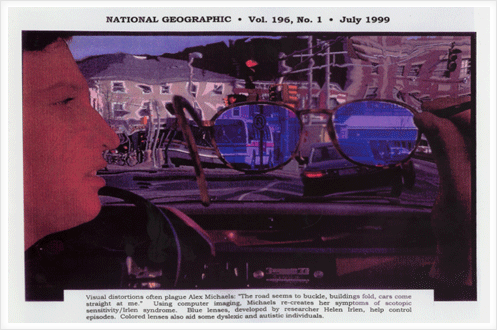 [National Geographic에 소개된 내용 - 자폐 아동이 평상시 세상을 볼 때와 얼렌 필터를 사용할 때와의 차이를 그림.]
[National Geographic에 소개된 내용 - 자폐 아동이 평상시 세상을 볼 때와 얼렌 필터를 사용할 때와의 차이를 그림.]
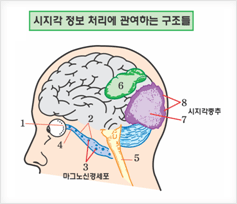 ⇒ 시지각적 스트레스
⇒ 시지각적 왜곡, 신체적 증상(두통, 피로, 충혈...)
⇒ 읽기 어려움: 오래 못 읽고, 건너뛰고, 읽었던 중 또 읽기, 속독이 안됨
⇒ 학습 부진, 정서적, 행동적 문제 발생
⇒ 시지각적 스트레스
⇒ 시지각적 왜곡, 신체적 증상(두통, 피로, 충혈...)
⇒ 읽기 어려움: 오래 못 읽고, 건너뛰고, 읽었던 중 또 읽기, 속독이 안됨
⇒ 학습 부진, 정서적, 행동적 문제 발생
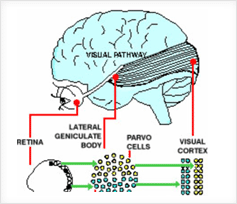 신경망이 무질서 하고, 신경 세포체 크기도 작았습니다. 빨리 변하는 정보를 전달하는 Magnocellular cell의 수가 거의 없었습니다.
⇒ 다음 이미지가 오기 전에 한 이미지를 깨끗이 지우는 뇌의 능력을 억제하여 이미지가 중첩되기도 하고, 둘 사이에 깨끗한 공백 없이 오가기도 하여서 글자가 어른거리고, 튀어 흩어지기도 합니다.
신경망이 무질서 하고, 신경 세포체 크기도 작았습니다. 빨리 변하는 정보를 전달하는 Magnocellular cell의 수가 거의 없었습니다.
⇒ 다음 이미지가 오기 전에 한 이미지를 깨끗이 지우는 뇌의 능력을 억제하여 이미지가 중첩되기도 하고, 둘 사이에 깨끗한 공백 없이 오가기도 하여서 글자가 어른거리고, 튀어 흩어지기도 합니다.
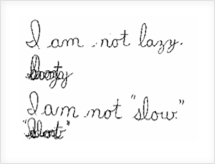
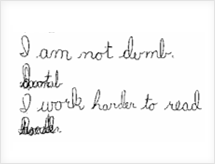 [These images were reproduced from Reading by the Colors by Helen Irlen, Penguin Putnam/Perigee Publishing. All rights reserved.]
[These images were reproduced from Reading by the Colors by Helen Irlen, Penguin Putnam/Perigee Publishing. All rights reserved.]






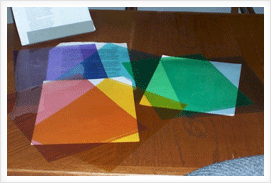 - 일단 읽기 싫어하는 학생
- 학습 장애의 유형별 검사 및 선별 검사를 해서 얼렌 증후군 유무를 확인
- 얼렌 증후군이 있는지 확인
- 자신에게 맞는 색상의 overlay를 찾아냄. 미국에서 100만 명 이상이 overlay를 사용
- 일단 읽기 싫어하는 학생
- 학습 장애의 유형별 검사 및 선별 검사를 해서 얼렌 증후군 유무를 확인
- 얼렌 증후군이 있는지 확인
- 자신에게 맞는 색상의 overlay를 찾아냄. 미국에서 100만 명 이상이 overlay를 사용
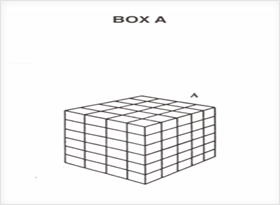
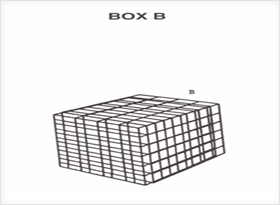
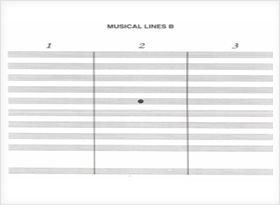
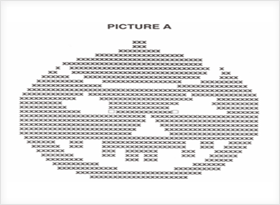
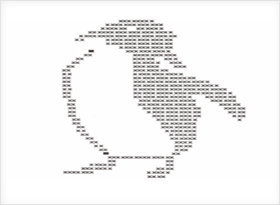
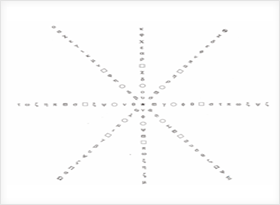
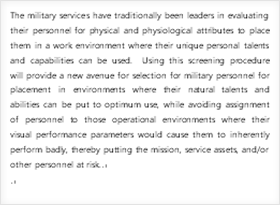
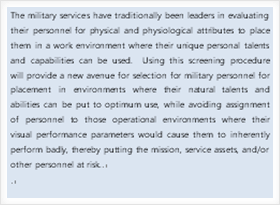
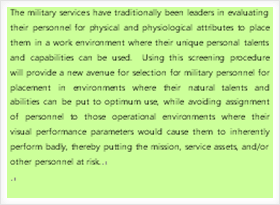
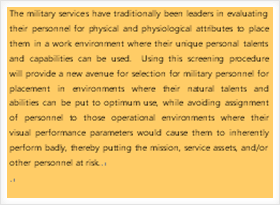
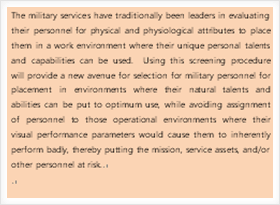
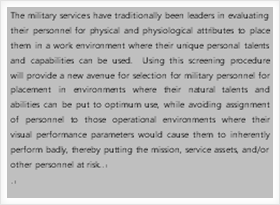
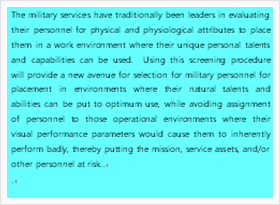 - 책에 있는 글자가 더 많이 눈에 들어옵니다.
- 속도가 빨라집니다.
- 내용이 눈에 더 잘 들어오고 바로 이해됩니다.
- 읽을 때 마음이 편합니다.
- 읽은 내용을 잊어버리는 경향이 감소합니다.
- 읽기 속도/ 이해력이 향상됩니다.
- 읽기 싫어하는 현상이 줄어듭니다.
- 집중력 증가 및 학습 능력 향상됩니다.
- 성격이 밝아집니다.
- 피로, 두통 등 신체 증상이 개선됩니다.
[These materials were reproduced from Reading by the Colors by Helen Irlen, Penguin Putnam/Perigee Publishing. All rights reserved.]
- 책에 있는 글자가 더 많이 눈에 들어옵니다.
- 속도가 빨라집니다.
- 내용이 눈에 더 잘 들어오고 바로 이해됩니다.
- 읽을 때 마음이 편합니다.
- 읽은 내용을 잊어버리는 경향이 감소합니다.
- 읽기 속도/ 이해력이 향상됩니다.
- 읽기 싫어하는 현상이 줄어듭니다.
- 집중력 증가 및 학습 능력 향상됩니다.
- 성격이 밝아집니다.
- 피로, 두통 등 신체 증상이 개선됩니다.
[These materials were reproduced from Reading by the Colors by Helen Irlen, Penguin Putnam/Perigee Publishing. All rights reserved.]
